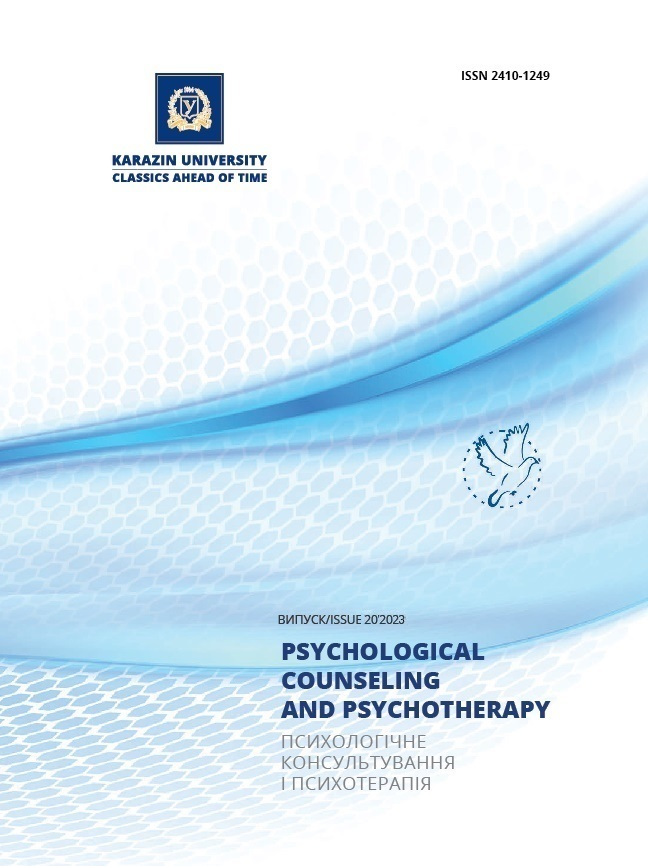A Story About Hibuki - A Psychologist's Instruments in Work with Children's Trauma
Abstract
Problem definition. The uncertainty of the consequences of situations related to stressful situations for the child's psyche actualizes the issue of introducing new approaches, methods and tools of psychological influence that would contribute to the preschooler's ability to overcome stress in a constructive way. Problem analysis. Childhood psychological trauma leaves its mark on the subconscious, can shape a person's worldview, beliefs, and identification of the self. And since trauma affects the levels of primary safety, it creates very powerful patterns in the mind. Signs of childhood trauma include mood swings, guilt, anxiety, feelings of abandonment, confusion and impaired concentration, and withdrawal. The conceptualization of traumatic experience is widely presented in scientific literature: theories of traumatic emotional experience (O.S. Kocharyan, R. Lanius, M. Massey, R. Hammer), conceptual foundations of the subverbal model of client-centered psychotherapy (O.S. Kocharyan), theories and typologies of infantile traumas (Johnson St. M., Burbo L., etc.), theoretical positions of procedural-experiential and emotionally-focused psychotherapy (Greenberg L. and Elliott R.), psychoanalytic theory according to Freud Z., ideas about the formation of early maladaptive schemes (Boterhoven de H., Christopher W., Fassbinder E., Hayes C., Katrina L., Yong J.) and others. However, solving many complex problems remains relevant, one of which includes psychological assistance to the most vulnerable population groups in extreme situations, one of which includes children and work with current traumatic experiences. The purpose of the study is to develop and test a multifunctional tool for working with childhood trauma in conditions of long-term traumatic circumstances. Conclusions. The stories about Hibuki, through which the child identified with the hero of the story, contribute to the restoration of internal mechanisms of the psyche, which help the process of restoring the child's psychological health. A psychologist can use these stories both to rehabilitate a child's psyche and to diagnose his or her emotional state.
Downloads
References
Kostyuchenko, O.V. (2022),Development of psychological resilience of the individual as a component of health by means of art therapy] Scientific notes of TNU named after V. I. Vernadskyi, 33(72), 2, P 43-50. (in Ukrainian).
Nauchitel, E., Makcimov D. (2023), The role of Hibuki psyhotherapeuting toy in the rehabilitation of childrens psychogical trauma. Basics of learning, the latest theories and methods - IX International scientific and practical conference: theses 07-10 marhs, Boston, P. 340-347 (in Ukrainian).
Nazarevich, V. V., Valkovska, M. M. (2022), The use of a toy as a transfer object in the formation of resilience in children] Collection of scientific works of RDSU, 19(101), P 60-67. (in Ukrainian).
Sharon-Maksimov, D. (2023), Hibuki: bulletproof vest for a child's soul, Kyiv: "NOV" Publishing House, 204 p. (in Ukrainian).








